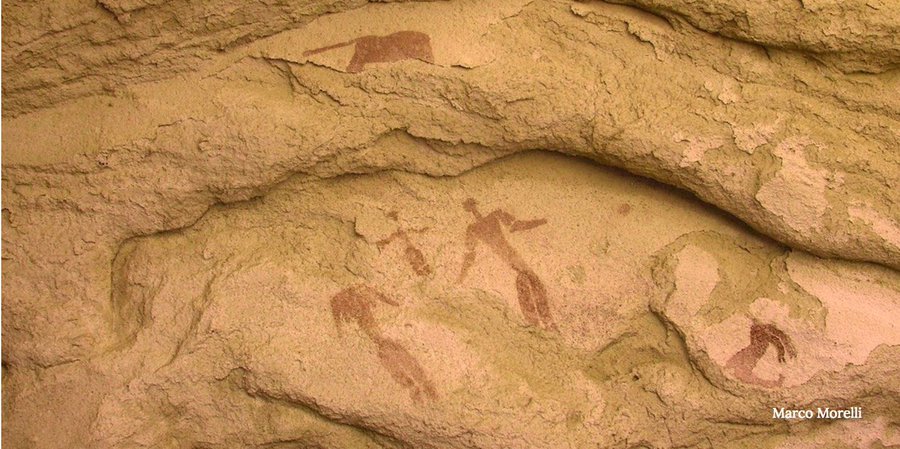A fascinating 5,000-year-old cave painting has been discovered in Egypt’s Sahara Desert.
Others are reading now
An intriguing discovery in the Egyptian Sahara has unveiled what appears to be the oldest known nativity scene, dating back about 5,000 years—some 3,000 years before the birth of Jesus Christ according to biblical accounts.
This prehistoric cave painting was discovered by Italian researchers at a site now called the “Cave of the Parents,” located between the Gilf al-Kebir plateau and the Nile Valley in the Egyptian desert.
Details of the Discovery
The cave painting features a newborn placed between two figures presumed to be its parents, flanked by two animals, beneath a depiction of a star in the east. The scene bears a striking resemblance to the Christian nativity story, although it predates the biblical narrative by several millennia.
Also read
The researchers believe it dates to the Neolithic or Stone Age.
The rock painting, rendered in reddish-brown ochre, contains several striking elements: a headless lion—which resonates with one of Jesus’ titles, the Lion of Judah. Notably, headless lions were considered mythical creatures during the Neolithic or New Stone Age in that region. Additional features depicted include a baboon or monkey, a star positioned in the east, and a baby slightly elevated towards the sky, a pose that may symbolize birth or pregnancy, as reported by Seeker.
According to Marco Morelli, director of the Museum of Planetary Sciences in Prato, Italy, and leader of the research team, the discovery is not only significant due to its age but also because of its evocative imagery that unexpectedly mirrors one of Christianity’s most enduring symbols.
“It’s a very evocative scene which indeed resembles the Christmas nativity, but it predates it by some 3,000 years,” Morelli stated.
Cultural and Religious Context
The resemblance to the Christian nativity scene is fascinating given the geographical and temporal distance from the origins of the Christian tradition. The nativity story, as described in the Gospels of Matthew and Luke, recounts the birth of Jesus in Bethlehem, guided by a star and attended by shepherds and wise men.
“The discovery has several implications as it raises new questions about the iconography of one of the more powerful Christian symbols,” Morelli added. “We didn’t find similar scenes until the early Christian age.”
The finding highlights how certain themes, such as birth under a significant star, transcend specific cultural contexts and may reflect universal human experiences and beliefs. Scholars of comparative religion might find the timing and symbolism of this Egyptian scene as a precursor to later religious narratives that also align with celestial events, further enriching our understanding of human religious expression.
The discovery has prompted renewed interest in the study of ancient Egyptian religious and cultural practices, as well as their potential influences on later traditions. As Morelli noted, similar scenes were not evident until the early Christian age, suggesting a unique and remarkable occurrence in the rock art of the Egyptian Sahara.


